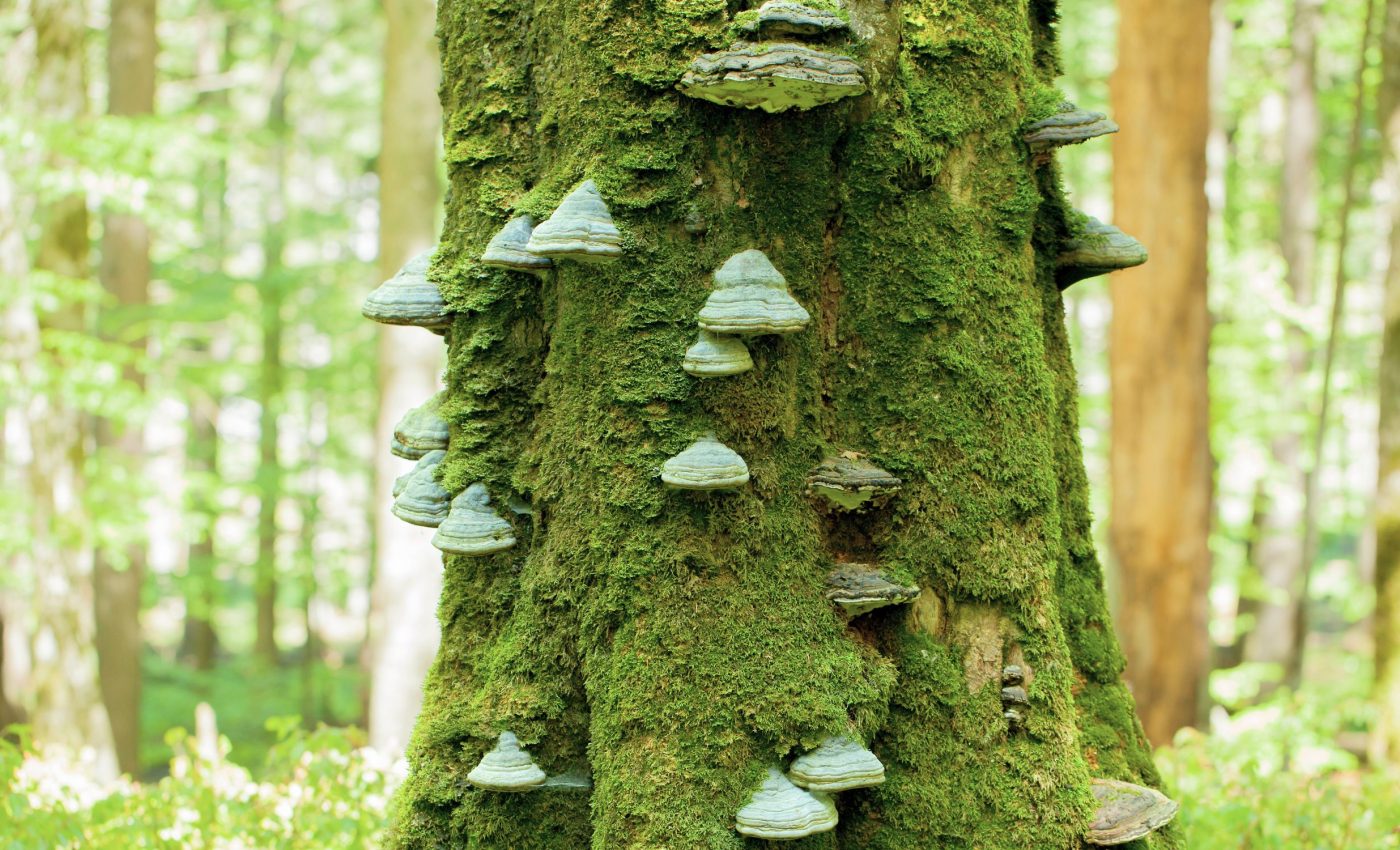
Trees have unique fungi partnerships that help them survive
Forests are not just a bunch of trees standing together. Beneath the ground, roots and fungi connect to share nutrients. This partnership, called symbiosis, helps trees survive in poor soils and tough conditions.
Some trees take this connection further. They link up with two different types of fungi at the same time.
Researchers at the University of Zurich (UZH) and Agroscope studied this strategy. They found that trees with dual fungal partners handle climate change better and spread into new areas more easily.
Two fungi are better than one
Some trees go beyond the usual single-fungus alliance. They partner with not one but two different types of mycorrhizal fungi. Why? It turns out that dual symbiosis means survival.
“Some woody plants form an alliance with two fungus types simultaneously,” noted study lead author Ido Rog from the Department of Plant and Microbial Biology at UZH.
The researchers analyzed over 400 tree species. They discovered that trees with two fungal partners could handle drought and nutrient scarcity better than those with just one. It’s like having two water wells instead of one – a backup when things get tough.
Fungi help trees spread
Rog calls it “bigamy,” and it’s a winning strategy. Trees with dual fungi reach farther and wider, colonizing places where other trees fail. Their expanded root systems access more nutrients and water, giving them a competitive edge.
“They thus are able to colonize a much larger territory than tree species that form a symbiosis with only one fungus type can,” said Rog.
The strategy works regardless of evolutionary history. It’s not about being a certain type of tree. Instead, it is about being adaptable. Trees that partner with two fungi create a safety net, thriving where single-fungus trees struggle.
The significance of dual fungi
Imagine a landscape dominated by drought and soil cracks, where trees struggle to stay hydrated. But trees with dual fungal partners are better prepared. Their roots extend deeper, reaching untapped water reserves. They also access nutrients from diverse soil layers, widening their survival range.
“Our findings indicate that polygamy with two fungus varieties served as a strategy enabling trees to adapt to rougher environmental conditions,” noted study co-author Professor Marcel van der Heijden.
Trees with dual fungi grow where others can’t, thriving in rocky, nutrient-poor soil. This strategy doesn’t just keep them alive – it allows them to flourish.
Trees that beat the heat
Climate change is turning once-lush forests into dry, barren landscapes. Trees that can handle drought and nutrient scarcity may become the new standard in reforestation projects.
“In forestry, this knowledge could be helpful in the future for selecting tree species specialized in dual fungal associations,” explained Professor van der Heijden.
The idea is simple: choose trees that can do more with less. Trees that work with two fungi can stretch resources, endure droughts, and claim more territory. It’s not just survival – but dominance in a world where resources are shrinking.
Understanding tree-fungi partnerships
There is more to this story than individual tree survival. Trees that form dual partnerships with fungi also impact entire ecosystems.
They stabilize the soil, prevent erosion, and create habitats for other organisms. These trees shape the landscape, turning barren ground into thriving ecosystems.
Trees with dual fungi don’t just survive. They change the game, creating new habitats and pushing ecological boundaries.
The implications are profound. As forests face increasing stress, understanding these fungal alliances could hold the key to saving them.
Dynamic network of connections
The study raises new questions. How many other tree species use dual partnerships with fungi? Could this strategy be applied to agricultural crops? And how do these fungi respond to extreme weather events?
Researchers are just beginning to unravel the complexities of these underground alliances. The answers could redefine reforestation strategies, climate resilience plans, and agricultural practices.
The forest floor may look silent, but beneath the surface, a dynamic network of connections is at work that could hold the secret to thriving in a changing world.
The study is published in the journal Ecology Letters.
—–
Like what you read? Subscribe to our newsletter for engaging articles, exclusive content, and the latest updates.
Check us out on EarthSnap, a free app brought to you by Eric Ralls and Earth.com.
—–













